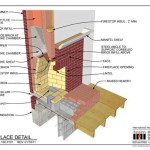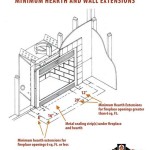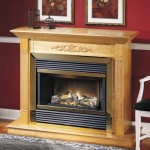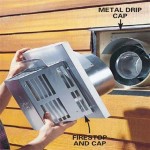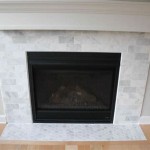Victorian Fireplace Mantels With Mirror: A Reflection of Elegance and Functionality
Victorian fireplace mantels with mirrors represent a distinct period in interior design, characterized by ornate details, functional embellishments, and a focus on creating aesthetically pleasing and practical living spaces. Popular throughout the Victorian era (1837-1901), these fireplace mantels were more than just decorative elements; they served as focal points within the room, reflecting light, expanding the perceived space, and providing a platform for displaying cherished belongings.
The Victorian era was marked by industrial advancements that enabled the mass production of decorative features, making them more accessible to a wider range of homeowners. Fireplace mantels, once only reserved for the wealthy elite, became increasingly common in middle-class homes. The addition of a mirror above the mantel further enhanced its appeal, combining beauty and utility in a single architectural feature. The use of dark woods, such as mahogany and walnut, was prevalent, often accented with elaborate carvings, moldings, and intricate detailing.
The inclusion of a mirror was not merely an aesthetic choice; it had practical considerations. Gas lighting, the primary source of illumination during the Victorian period, was often dim. The mirror reflected and amplified the light, making the room brighter and more inviting. Moreover, the mirrored surface created an illusion of greater space, a particularly valuable asset in smaller Victorian homes. These factors contributed to the enduring popularity of Victorian fireplace mantels with mirrors, making them highly sought-after antiques and replicated designs today.
Aesthetics and Ornamentation
Victorian fireplace mantels are renowned for their elaborate aesthetics and extensive ornamentation. Common features include intricate carvings, often depicting floral motifs, scrolls, and classical figures. The mirror frames themselves were frequently adorned with gilded detailing, adding a touch of opulence and sophistication. The style of ornamentation varied depending on the specific period within the Victorian era and the overall design aesthetic of the home. For example, early Victorian mantels tended to be more restrained, while those from the late Victorian period were characterized by a greater degree of extravagance.
The choice of wood was also significant, with darker woods like mahogany, walnut, and rosewood being particularly favored for their rich color and grain patterns. These woods were often polished to a high sheen, enhancing their luster and highlighting the intricate carvings. In some cases, the mantels were painted or stained to match the overall color scheme of the room. The mirrors themselves were typically beveled, adding another layer of visual interest and sophistication. The overall effect was one of refined elegance and meticulous attention to detail.
Furthermore, the selection of materials for the surrounding fireplace elements, such as the tiles and hearth, contributed to the overall aesthetic. Victorian fireplaces often featured decorative tiles, depicting scenes from nature, geometric patterns, or other intricate designs. The hearth, typically made of stone or marble, provided a solid and durable base for the fireplace, while also complementing the overall design of the mantel.
Functionality and Purpose
Beyond their aesthetic appeal, Victorian fireplace mantels with mirrors served several functional purposes. The fireplace itself was, of course, a primary source of heat, particularly in colder climates. The mantel provided a protective barrier surrounding the fireplace opening, preventing heat from damaging the walls and surrounding woodwork. It also served as a platform for displaying decorative items, such as vases, figurines, and family photographs. These items added a personal touch to the room and reflected the homeowner's taste and preferences.
The mirror above the mantel served both practical and aesthetic functions. As mentioned earlier, it reflected light and expanded the perceived space of the room. It also provided a convenient place to check one's appearance, especially in the absence of readily available electricity and easily accessible bathrooms. The mirror's placement above the fireplace mantel also positioned it as a focal point, drawing the eye and creating a sense of balance within the room. This central location allowed the mirror to become a crucial element of the room's overall design and decor.
Moreover, the construction of the mantel itself could contribute to the fireplace's functionality. Some mantels included built-in shelves or cabinets, providing additional storage space for firewood, fireplace tools, or other household items. This integrated storage helped to keep the room tidy and organized, while also maximizing the use of available space. The combination of these functional and aesthetic features made the Victorian fireplace mantel with mirror a valuable and highly desirable addition to any home.
Variations in Style and Design
While Victorian fireplace mantels with mirrors share common characteristics, there were also significant variations in style and design, reflecting the diverse range of influences and preferences that shaped the Victorian era. Some mantels were designed in the Gothic Revival style, featuring pointed arches, trefoils, and other architectural elements inspired by medieval cathedrals. Others were influenced by the Italianate style, with elaborate cornices, brackets, and symmetrical designs. Still others were influenced by the more simplified and restrained designs of the Arts and Crafts movement.
The size and shape of the mirror also varied, depending on the overall design of the mantel and the proportions of the room. Some mantels featured tall, narrow mirrors, while others had wider, more rectangular mirrors. The shape of the mirror frame could also vary, ranging from simple geometric designs to more elaborate, curvilinear forms. The frame could be made of wood, metal, or a combination of both, and was often adorned with decorative detailing.
The choice of decorative elements also contributed to the variations in style and design. Some mantels featured classical motifs, such as acanthus leaves, egg-and-dart moldings, and representations of Greek gods and goddesses. Others incorporated more naturalistic elements, such as floral garlands, birds, and other animals. The overall effect was one of great diversity and creativity, reflecting the eclectic tastes and artistic sensibilities of the Victorian era. These variations allow for a range of choices when selecting a Victorian fireplace mantel with a mirror, depending on the specific period and aesthetic one desires to incorporate into a space.

Victorian Era Fireplace Mantels Old World Gothic And Interior Design

1880 Antique Grand American Victorian Mahogany Mirror Trumeau Fireplace Mantle

Antique 1890s Victorian American Tiger Oak Fireplace Mantel With Columns Mirror Chairish

Victorian Oak Fireplace Mantel Mirror Surround Mantels Antique

Walnut Woodwork With Large Napoleon Iii Style Fireplace Paneled Rooms

Victorian Fireplace With Overmantle Mirror 4290lc Antique Co

1880s Antique Victorian Walnut Over Fireplace Mantel Mirror With Shelves Chairish

Antique Victorian Tiger Oak Fireplace Mantel With Beveled Mirror Circa Wood Mantle Furniture

Victorian Fireplace With Overmantle Mirror 4290lc Antique Co

Ornate Wood Victorian Fireplace Mantle Mantel Columns Beveled Mirror 001251010
Related Posts

